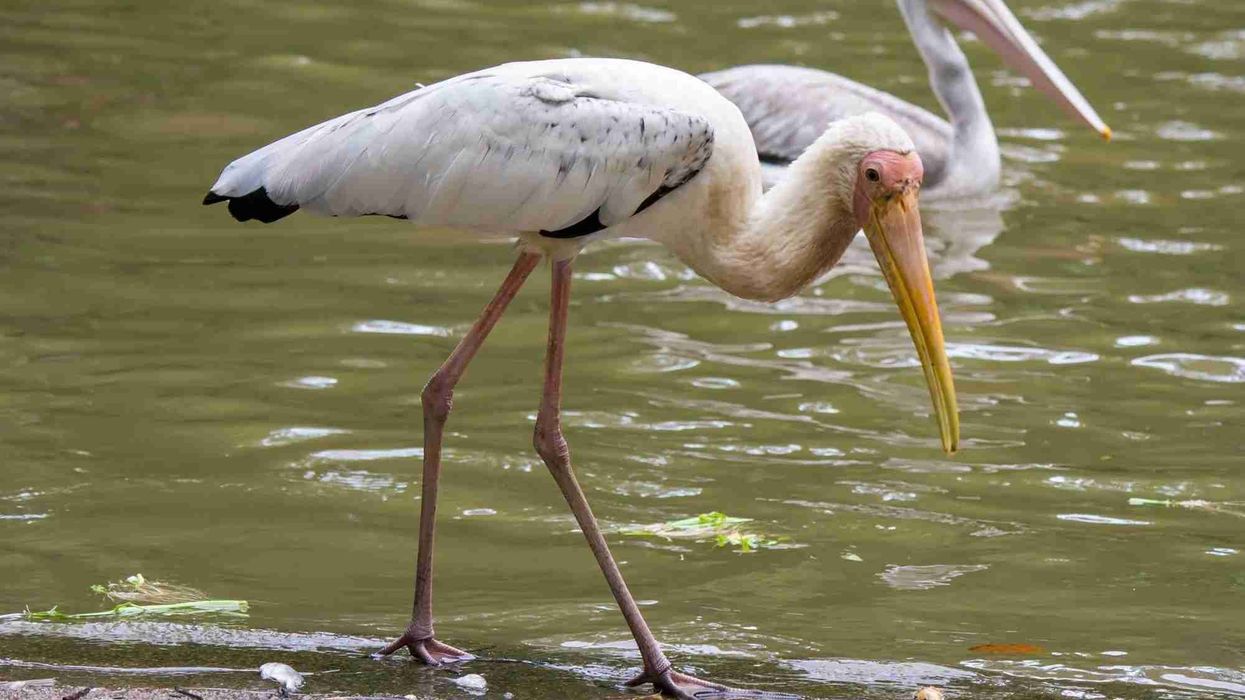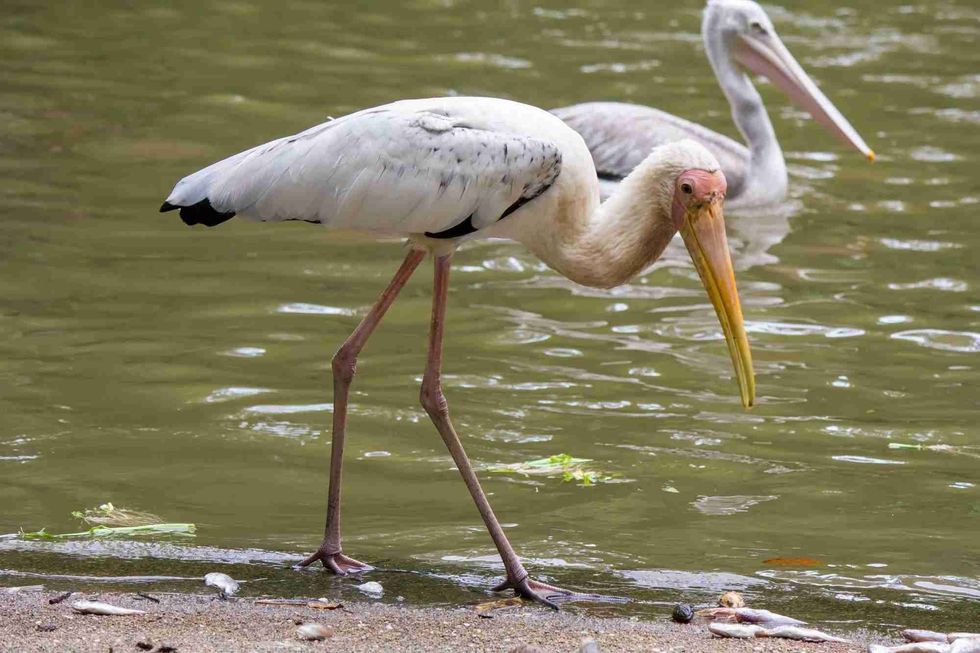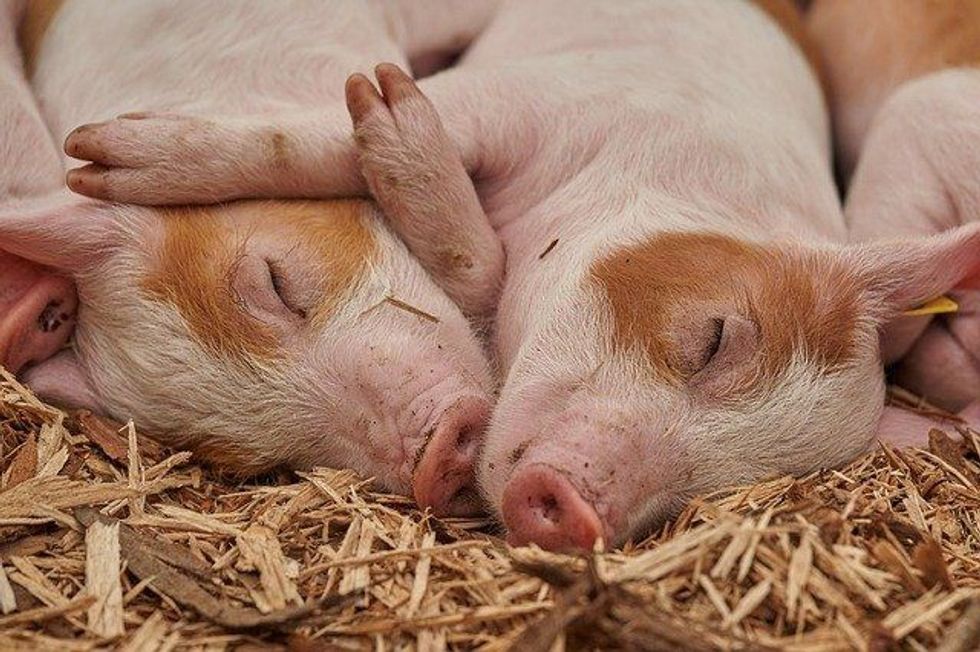Waterbirds always remained to be few of the most elegant birds that live on our planet. The milky stork, Mycteria cinerea, is one such species.
These birds belong to the Ciconiidae family and are closely related to the species from the genus Mycteria.
These birds of the world were originally not in the genus Mycteria, however, they were later included in that due to their similar features with other birds in that species. It's very easy to identify males from this family genus, their white head feathers are quite distinguishable.
Although, it can be very difficult to identify a milky stork as they look very similar to other birds.
Birds such as the sympatric Asian openbill and species such as the white egret are very similar to milk storks. You can find the breeding colonies of these species on Pulau Rambut, although, sea pollution has been affecting the breeding success, areas such as Kuala gula are also the same for these birds.
The milky storks are generally considered as coastal species, and sometimes they forage on tidal mudflats and even freshwater reservoirs.
This bird species is noticed to have several foraging behaviors, the Vietnam milky stork disturbs the river bed, to get a better chance at the aquatic prey. On the other hand, their technique for catching fish from shallow water reservoirs is very different.
The milky stork population has had a close connection with the Indonesian people for a long time. Nevertheless, these birds are sometimes also considered a pest in the commercial agricultural industry.
Other species such as the painted stork also are significantly similar to this bird from the family Ciconiidae. Over the course of the period, BirdLife International believed that the usual stork habitat in places like Malaysia and Sumatra are also shared with other similar bird species. Read on to find out more.
If you find these facts interesting, do check out the black stork and oriental stork too!
Milky Stork Interesting Facts
What type of animal is a milky stork?
The milky stork belongs to the Chordata phylum and is a type of bird. They are found in Matang mangrove forests and often move to different places during their breeding season.
What class of animal does a milky stork belong to?
The milky stork, Mycteria cinerea, belongs to the Aves class and they often take short seasonal migration, once the breeding season is over. These species migrate often from south Sumatra to Java. Sumatra, Java is considered the regular place for their free-flying and migratory seasons.
How many milky storks are there in the world?
The population status for these species isn't very positive, they are even listed in the red list. The population of these birds has been suffering since the year 1980s from various human disturbance activities and habitat destruction.
The long-lasting dry season, flooded forest, and mangrove deforestation resultant very bad for these birds. The results of deforestation, lead to a scarce of mature trees and the juveniles were then sold to Singapore zoo and several European zoos. Their population was also wiped from Vietnam for the very same reason.
The Southeastern war was also the key reason why the population in the southeast and Bali Sumbawa went very low. The overall population of these birds is merely 1500 today.
Where does a milky stork live?
The milky stork population is spread across a large range of areas. Entire southeast Asia comes in their range.
Although areas such as Sumatra and Java are more important than few others. Other places for these birds are eastern Malaysia, Cambodia, and even Thailand. Although, now these species are only present in fragments and most of them are taken to the various bird park where they are studied closely.
What is a milky stork's habitat?
Milky storks are often seen as foraging species and sometimes also as small pests when it comes to agricultural areas and rice fields. This long bill bird often prefers lowland coastal areas.
The stork stands and rests near tall trees, although in some places like south Sumatra there can be a lack of mature trees, then they go for finding shelter at a pole or whichever location seems appropriate.
They forage on tidal mudflats, shallow water, and even freshwater pools.
Fish ponds and rice fields along with back swamps and floodplains are their favorite locations as well. Although the milky stork is marine and the famous painted stork is not, but these species sometimes share habitats in the plains of Cambodia.
Who does the milky stork live with?
In places like Sumatra, Java, and Malaysia these birds are assumed to live with other species such as little egrets and the greater flamingo.
How long does a milky stork live?
It has been noticed that a great part of the milky stork population lives for 10-12 years, Although, according to BirdLife International most of these birds live for 12 years.
How do they reproduce?
The breeding season for milky stork, Mycteria cinerea, occurs during the rainy season and lasts for several months. However, the breeding season for species can be different, for the painted stork, it is variable and occurs from June to September.
These birds get sexual maturity after three to four months of birth. During the non-breeding season, their population is mostly silent, however, at the breeding colonies, the youngs are very loud.
Captive breeding is noticed in various birdlife international parks but the natural breeding is a little different. The milky storks breed in colonies and choose the Matang mangrove forest for it. Breeding colonies require areas that are far from human disturbance.
The nest is built in large areas, breeding colonies of these birds can have as many as a hundred nests. The nest is bulky and around 50 cm (19.6 in) in diameter.
Around one to two eggs are laid per season. The parents are very affectionate and often show it through bill clattering and head bowning with each other while sharing the nest duties.
What is their conservation status?
According to BirdLife International, the population of these birds of the world is under the red list and they are currently under the status Endangered.
Milky Stork Fun Facts
What does a milky stork look like?
An adult milky stork, Mycteria cinerea, is very different from the just born babies of milky storks. They have a completely white body except for their black flight feathers.
The feathers also have a dark green gloss, the facial skin is grayish. Their face also has black markings, while they have bright red skin around their eyes.
Some parts of their plumage are pale creamy, they have a long thick bill that is pinkish-orange in color. The chicks are completely white and their flight feathers appear after two to three weeks since their birth.
How cute are they?
Milky storks are a beautiful species and share close relations with humans. In places like Cambodia and Malaysia, they are adored by the general public, their black feathers with green gloss are indeed a spectacular sight to experience.
How do they communicate?
Milky storks live in colonies and they also migrate in colonies. This species is very affectionate and often they express it with a noisy bill-clattering.
How big is a milky stork?
Saurus cranes are almost three times bigger in size compared to a milky stroke, whereas the marabou stork is five times bigger in size.
How fast can a milky stork fly?
A milky stork flies very fast, it's said that these birds can cover a distance of almost 124 mi (200 km) just in one day.
How much does a milky stork weigh?
A milky stork weighs around 4.4-6.6 lb (2-3 kg).
What are the male and female names of the species?
Both the sexes are addressed with the same name.
What would you call a baby milky stork?
Young baby milky storks are born with a white down and they do not have feathers as well. The nestlings have a dark brownish bill and have a loss of feathers.
The young of this species are called nestlings and they are very delicate during the time of their birth and two to three weeks after that. The nestlings are protected by their parents and gain full maturity in three months.
What do they eat?
Part of the reason why milk storks are on the red list of endangered species is because of deforestation which leads to a lack of food for this species. As noted by BirdLife International these birds of the world eat insects, frogs, toads, and lizards.
They even feed on tiny fish, their bill is quite helpful when it comes to hunting for prey.
Are they dangerous?
The milky storks have a long and sharp bill and can be aggressive when defending their nest. Nonetheless, most times they are very quiet and do not harm anyone. However, this bird is considered a pest in the rice fields and agricultural areas as they tend to disturb the farming a little.
Would they make a good pet?
This species of bird is currently under the red list of Endangered species and it's advised to not separate them from their colonies or habitat. Thus, it's not ideal to pet this bird, it's best to let them live undisturbed in a natural habitat such as Cambodia and Malaysia.
Did you know...
During the breedings season, these birds develop irregular maroon markings. The breeding birds often have a pinkish band alongside their upper wing. Their bare facial skin also gets maroon markings.
Do milky storks migrate?
Yes, the milky stork, Mycteria cinerea, migrates but it's only seasonal. These birds only migrate outside of their breeding season.
Local migrations by these birds are often similar to those of the waders in the dry seasons. During September and October, these birds migrate across the Sunda straits and can cover up to 124 mi (200 km) in a day.
How to tell female and male milky storks apart
Both the sexes of the milky stork, Mycteria cinerea, population are identical in looks. Although, the males are larger in size compared to the females. Both the sexes have the same plumage and black feathers, you can distinguish them only through their size.
Here at Kidadl, we have carefully created lots of interesting family-friendly animal facts for everyone to discover! Learn more about some other birds from our jacana fun facts and umbrellabird interesting facts for kids pages.
You can even occupy yourself at home by coloring in one of our free printable milky stork coloring pages.










